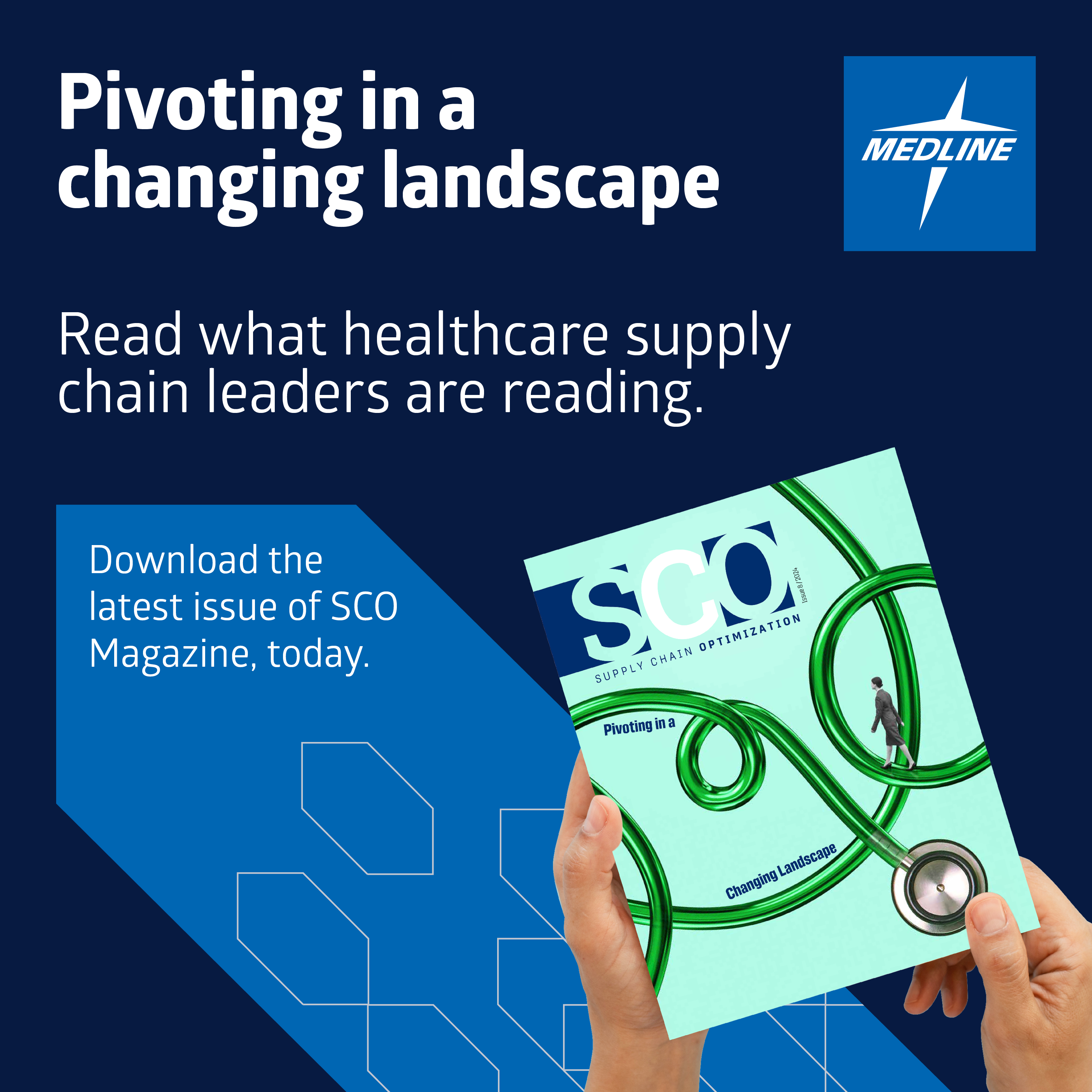The future of the healthcare supply chain

By Medline Newsroom Staff | October 3, 2022
The last few years have brought about increased visibility to the overall resiliency and preparedness of the global supply chain, highlighting the industry’s ability — and inability — to manage sustained, long-term demand. The Medline Newsroom recently spoke with industry leaders across the country to capture their insights into what will shape the future of the healthcare supply chain and contribute to the ability to respond to the demands of the next crisis.
“We should all be standing on the shoulders of giants”
“Open collaboration is key – sharing lessons learned throughout every industry; not only healthcare; learning what we can do better, and what others have done , so together we can take that torch further,” said Ada Demir, vice president of operations and chief procurement officer (CPO) at Montefiore Health System. A sentiment reinforced by Scott Wilkerson, CPO at the University of California Office of the President, UC Health, who believes as an industry, “we should all be standing on the shoulders of giants.”
Learning from those before us and looking towards the future of the supply chain and the industry, “healthcare is not an environment where we are competing with each other. We continue to collaborate across the industry in the interest of driving the best patient care,” added Wilkerson.
“One of the positive outcomes from the pandemic is the increased visibility about the supply chain across all industries, all functions, and all departments within an organization.”

Ada Demir
Vice President of Operations and Chief Procurement Officer (CPO), Montefiore Health System
“As an industry, suppliers and providers — all the way from our dock to the supply room in the healthcare facility — have to be willing to look at the supply chain as a complete end-to-end solution,” said Jim Boyle, executive vice president at Medline. “If we can work in unison, we can reduce duplicative efforts and create a much more streamlined approach to overall supply chain resiliency. This will take work, but I am confident we will achieve a much better outcome as a team.”
Transparency in all things
Improved collaboration will require increased transparency across all elements of the supply chain.
“One of the positive outcomes from the pandemic is the increased visibility about the supply chain across all industries, all functions, and all departments within an organization. I think this depth of transparency is driving significant change, and represents a positive gain born from a painful and devastating experience,” said Demir.
“Three years ago, I cared less about the details of the manufacturing and distribution of a product. Now I do. COVID showed us that commodities, sourcing, product availability, and inventory management basics are all important,” said Cairo Wasfy, chief resource officer at Ardent Health Services. “I want to understand how and where our partners get their products, how financially stable our vendors are. It’s about more than moving the product. It’s now a partnership and my senior leaders are very interested in the entire process.”
“COVID showed us that commodities, sourcing, product availability, and inventory management basics are all important.”

Cairo Wasfy
Chief Resource Officer, Ardent Health Services
Pre-pandemic, it was less important for people to understand how a product got from point A to point B, “now the whole world wants to know – from raw materials to delivering the product to the shelf,” said Wilkerson. “Let’s work together to drive that transparency. It might require more information sharing than people would have wanted to do in the past, but I think we have to do that.”
“One of the number one lessons learned over the pandemic was not only transparency, but frequency and consistency of communication — ensuring we provided 100% of the information, whether good, bad or ugly, so our customers could make the best decisions,” said Boyle. “I believe consistent, ongoing communication and collaboration with customers, suppliers, government agencies, and even competitors, should be considered a best practice across the industry for future supply chain operations.”
History is a compass, not a map
“We must look at what happened, what was learned, and what was preventable. Doing an after-action review to keep the impact of the emergency top of mind,” advised Wilkerson. “We can’t just take a deep sigh of relief. We must pause and reflect on these experiences and get better, not resort to former models.”
“Technology is a central enabler, especially considering all of the changes happening worldwide. It is imperative to leverage the technologies available today to the best of our ability as well as adopt new technology like AI, that has the potential to make us more efficient year over year,” according to Demir.
“Healthcare is not an environment where we are competing with each other. We continue to collaborate across the industry in the interest of driving the best patient care.”

Scott Wilkerson
CPO at the University of California Office of the President, UC Health
Wilkerson advised looking outside of healthcare to other industries for ways to think outside the box, and “tap into the technology startup mentality – what tools or methodologies do we need to create to enable us to think completely differently about supply chain design – instead of just taking something and polishing it.”
At the end of the day, while the pandemic may have abruptly upended the healthcare supply, ongoing change is inevitable and necessary to meet the evolving needs and demands of patient care.
“Somebody asked me the other day if I would like to go back to how things were before COVID-19. The answer is no,” said Wasfy. “In 2019, we were more interested in price than service and availability of products. Partnerships were less important; there was less sitting at the table with leadership to help understand the supply chain. And now we are listening to each other. I really like the back-and-forth transparency we have now. It makes for stronger partnerships.”
Medline is committed to improving the healthcare supply chain’s resiliency today and in the future. Learn how Medline is helping make healthcare run better across the entire continuum of care as a manufacturer and distributor.
Medline Newsroom Staff
Medline Newsroom Staff
Medline's newsroom staff researches and reports on the latest news and trends in healthcare.

